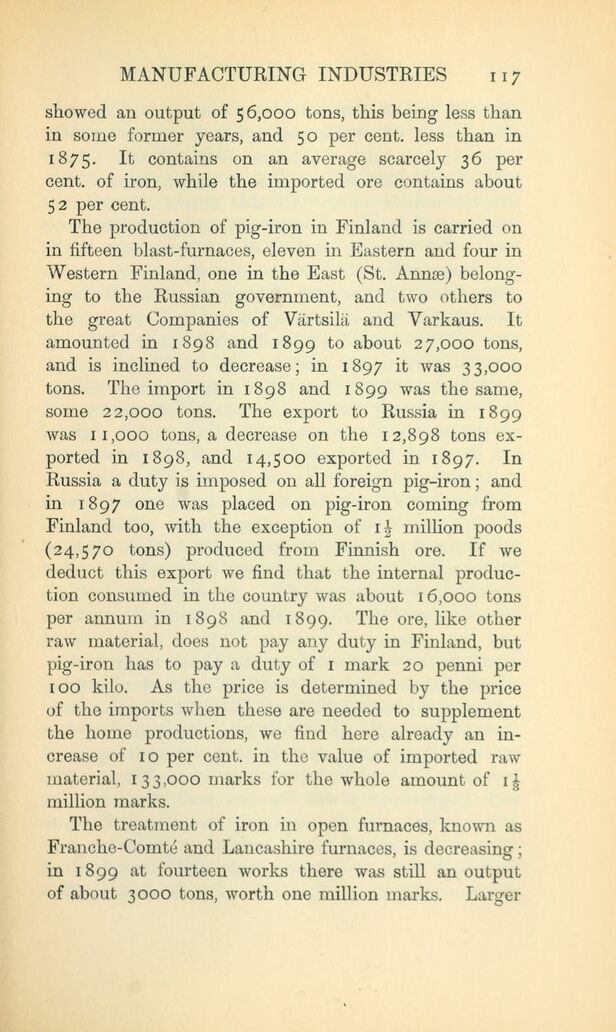
Full resolution (JPEG) - On this page / på denna sida - VI. Mining and Manufacturing Industries

<< prev. page << föreg. sida << >> nästa sida >> next page >>
Below is the raw OCR text
from the above scanned image.
Do you see an error? Proofread the page now!
Här nedan syns maskintolkade texten från faksimilbilden ovan.
Ser du något fel? Korrekturläs sidan nu!
This page has been proofread at least once.
(diff)
(history)
Denna sida har korrekturlästs minst en gång.
(skillnad)
(historik)
showed an output of 56,000 tons, this being less than
in some former years, and 50 per cent. less than in
1875. It contains on an average scarcely 36 per
cent. of iron, while the imported ore contains about
52 per cent.
The production of pig-iron in Finland is carried on
in fifteen blast-furnaces, eleven in Eastern and four in
Western Finland, one in the East (St. Annæ)
belonging to the Russian government, and two others to
the great Companies of Värtsilä and Varkaus. It
amounted in 1898 and 1899 to about 27,000 tons,
and is inclined to decrease; in 1897 it was 33,000
tons. The import in 1898 and 1899 was the same,
some 22,000 tons. The export to Russia in 1899
was 11,000 tons, a decrease on the 12,898 tons
exported in 1898, and 14,500 exported in 1897. In
Russia a duty is imposed on all foreign pig-iron; and
in 1897 one was placed on pig-iron coming from
Finland too, with the exception of 1½ million poods
(24,570 tons) produced from Finnish ore. If we
deduct this export we find that the internal
production consumed in the country was about 16,000 tons
per annum in 1898 and 1899. The ore, like other
raw material, does not pay any duty in Finland, but
pig-iron has to pay a duty of 1 mark 20 penni per
100 kilo. As the price is determined by the price
of the imports when these are needed to supplement
the home productions, we find here already an
increase of 10 per cent. in the value of imported raw
material, 133,000 marks for the whole amount of 1⅓
million marks.
The treatment of iron in open furnaces, known as
Franche-Comté and Lancashire furnaces, is decreasing;
in 1899 at fourteen works there was still an output
of about 3000 tons, worth one million marks. Larger
<< prev. page << föreg. sida << >> nästa sida >> next page >>